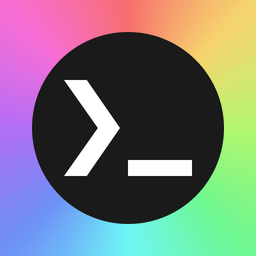

deleted by creator
Just an ordinary myopic internet enjoyer.
Alts:


deleted by creator


deleted by creator


I’ve had one of those (battery died, unfortunately) and if you’d look at its files, you’d notice that they are organized in a different structure than what an MP3 player might expect.

iPod_Control\Music’s sudirectories might contain some songs, but the filenames are hashes (corresponding to the entry in the iPod db). The metadata and the contents are perfectly fine, and you can play the file yourself via a different player (you can probably test it in your computer).
I suggest you just connect the iPod through the 3.5mm output audio jack or find a 3.5mm audio output to Bluetooth transmitter adapter.
EDIT:
WTF. I triple posted. My bad. I deleted the two others, also corrected some minor typos and mistakes.


It takes a lot of work and adjustment if you’re new to tiling window managers. It takes time (and some skill, but that can be built over time).


I only got to know this because of an XKCD comic.


The Arch Wiki (and possibly other Arch websites, but when I checked I wasn’t able to catch it) uses Anubis (https://anubis.techaro.lol/) to mitigate AI crawlers causing issues on their servers. Anubis works by making your computer do some computations before being let in. For users like you and me, it’d be a minor inconvenience, but for these AI crawlers, it’d cost them a lot of computation as they hit these sites a huge number of times.
Using Anubis is said to be a nuclear option, but as these AI crawlers don’t care about that, sites, especially FOSS ones, started using it.


The author lost me when they showed the terminal command to install Nvidia drivers on Debian. Yes, it’s one sentence. That’s still extremely daunting to the vast majority of computer users. It undermines the author’s own thesis.
I think it’s just a consequence of the variety of ways a Linux distro can present its options and settings. It’s far easier—and arguably, safer—to share a command than to anticipate how to get to a certain option or setting.
Just as an aside, I had this exact same problem when a friend asked me to do something on my system. I ended up having to send them screenshots of what I’m looking at in order to direct me to where I need to be. All that trouble could have been avoided had they sent me a command to run on my terminal.
Is it better to have a utility that a user can just click? Yeah! Someone can write a utility program that can do just that, I guess. But then again, the problem now becomes how the user can make sure this utility program is in their system.
I guess it can be a bash script? The user can download the script and then make it usable. It’s a few clicks in Dolphin and (Gnome) Files, probably the same in Thunar, but we’re back to the same problem: the variety of ways a GUI can take to the same end.
I highly doubt that Linux users, at least the ones who value customization, will want to lose that customizability in order to make things easier for Windows refugees and pull more of them in.


It’s from this comment somewhere else in this thread: https://lemmy.dbzer0.com/comment/17995404
I just took the link there as well as other information from the other comments here and collated the information along with the description.


I wanted to see what it is about other than the title. Thankfully, some of the replies here have given me where to go to get the info to make a decision before I watch the video.
Peertube mirror (thanks to @fxomt@lemmy.dbzer0.com):
Transcript (thanks to @itslola@lemmy.world):
Description (taken from the TED talk link):
“We are watching the collapse of the international order in real time, and this is just the start,” says investigative journalist Carole Cadwalladr. In a searing talk, she decries the rise of the “broligarchy” — the powerful tech executives who are using their global digital platforms to amass unprecedented geopolitical power, dismantling democracy and enabling authoritarian control across the world. Her rallying cry: resist data harvesting and mass surveillance, and support others in a groundswell of digital disobedience. “You have more power than you think,” she says. (This talk contains mature language.)


Just for reference.



IDK why, but I went in expecting someone rewriting the software for PS1 in Rust.


I’ve played Simutrans on and off ever since the mid 2010’s. I’m not any good at it, and usually play it without regard to a lot of its mechanics (especially managing finances), but I’ve spent countless of hours just connecting communities and cities with over-engineered roads, rail systems, ferries, and airplanes.


No problem. I actually discovered this via an entirely different route, and it can really be frustrating sometimes.
KDE Plasma is so powerful and provides a metric ton of options. However, a lot of them are lying “hidden” like this. Still, kudos to KDE Plasma for having these options be configurable via a GUI, in a more or less logical place.


In the KDE systems settings, go to “File Associations”.

From there, you’d be seeing a tree of “known types”, go to “inode” and then “directory”, you can add a new program by clicking “Add…” in the “General > Application Preference Order” area.
What’s happening here is that you’re adding a program to handle the “inode/directory” mimetype. Because of that, this change isn’t limited to Konsole, but will also affect other programs.
J’ai utilisé LibreWolf et il a bien fonctionné avec Firefox sync. Si je me souvenir bien, il faut activer (permettre) Firefox sync dans les options. Maintenant, j’utilise Floorp. Il, également, bien fonctionne avec Firefox sync.
(Désolé pour mon mauvais français.)
I have used LibreWolf and it works well with Firefox sync. If I am remembering correctly, it must be enabled in the options. Right now, I use Floorp. It also works well with Firefox sync.
(Sorry for my poor French.)


Thanks for the head’s up. I’ve switched to IronFox just earlier.
Getting it into my phone wasn’t as straightforward as I expected. I first failed to find it on Fdroid. Then I tried toinstall it via Obtanium, but somehow failed. A bit of more research gave me Fdroid repository link that allowed me to finally install it. Everything after that is a breeze though.
Moving my collections from Mull to IronFox had to be be done manually though (or maybe I just didn’t find out a better way to do it), but it wasn’t at all painful.


Thanks for the head’s up! I’ll take a look at IronFox and see if it fits my existing set-up (syncing from Linux/Windows PC to mobile). Again, thanks!


Not who you’re asking, but I’ll answer nevertheless.
I’ve jumped from vanilla Firefox, to Librewolf, and now to Floorp. I’ve also played a bit with Zen. In all of them (except Zen, which I didn’t go to the process of connecting my Mozilla account), my Mozilla account connected and synced just fine.
I also no longer use vanilla Firefox mobile, but moved on to Mull. I am able to sync my stuff from Floorp to Mull and back without much trouble.
EDIT:
Thanks to a couple of people, I was informed that Mull is now unmaintained, and that IronFox took its mantle. I’ve switched to it just earlier now, and syncing works there too!


They certainly exist in Ikea here in the Philippines. I’ve been there a few months ago and the free pencils and paper tape measures (rulers?) are still there and being used.
Or maybe just put Arch in that Ventoy USB. (Yeah, yeah, I use Arch, btw.)